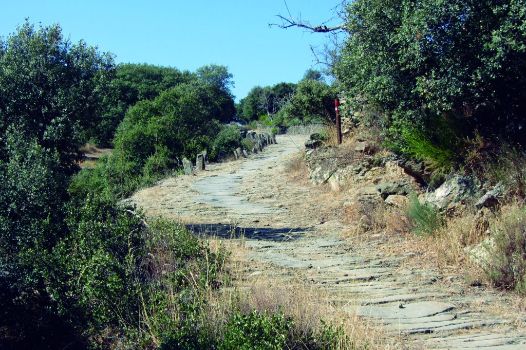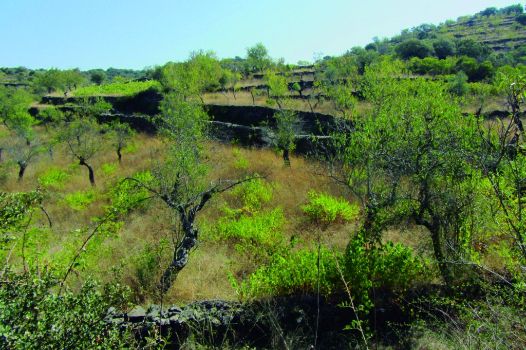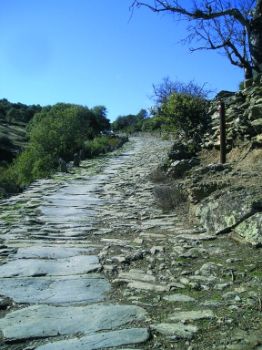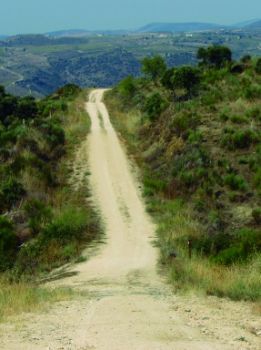Net of Natural
Trails

Stage 39: Vilvestre - Saucelle
Description
Pink and white: The landscape of almond trees
This Stage is gentler and shorter than the previous ones. The watchtower at Vilvestre Castle and the almond groves, which bring colour to the fields in spring, make this walk an oasis of tranquillity and a feast of the senses.

The beautiful village of Vilvestre, known by locals as "El Castillo", has a watchtower perched over the plain where the Stage starts.
Before leaving the village, one should visit the Casa Museo de Arribes, a restored building of great architectural interest, in which modern and traditional elements have been blended skilfully.
The path heads south along the wide streets of Vilvestre. Near the swimming pool, close to a watering trough, the Trail turns onto a very rocky track due to the abundance of slate in the area.
The route slowly drifts away from the village and ventures into a forest of scattered holm oaks (Quercus ilex) where the path of loose rocks narrows slightly.

The Nature Trail reaches a small valley where the vegetation is lusher than in the previous Stage. Here, the plants have small, hard, evergreen leaves that allow them to survive in harsh conditions, with high summer temperatures and low rainfall throughout the year.
Past this small valley, the landscape opens up in front of the traveller. Shepherd huts, known as "casitos", accompany the route. The Trail runs along easy tracks, although it is increasingly narrower, wedged in by stone walls. Nonetheless, the width is always enough for an oxen-driven wagon to pass, the standard measure when it was built.
The path continues between walls, surrounded by almond groves, arguably the only crop still cultivated here. Indeed, many farms have been colonised by yellow broom (Cytisus scoparius).

The narrow path leads to a land consolidation track, turn lefts, and then right to reach a wider path, where the farmsteads are larger, and the space between walls allows greater freedom of movement.
Finally, the Trail takes the SA-330 until Saucelle. The route enters the village from the back of the sports centre. In late summer or early fall, one can see almonds drying in the sun on the streets.
The path traverses through the heart of the village, crosses the road, and reaches a viewpoint with two wooden benches, from where one can enjoy stunning views of the countryside surrounding the village. The Stage ends here.
Sites of interest
Profile

Highlights
Further information
Growing almonds
The almond (Prunus dulcis) has been a traditional crop at Arribes del Duero for centuries. Despite not being a native tree, it has adapted perfectly to the Arribes’ climate.
Almonds are the fruit of this popular tree, which is spread easily in the wild by corvids.
Almond trees are spaced every six metres. One hectare can accommodate 350 almond trees and produce up to eight kilos per tree.
Almonds have been used since ancient times in confectionary; indeed, it is the main ingredient for marzipan or "Tarta de Santiago". It is also used to make almond milk, which many people drink instead of milk of animal origin. Almond oil is used as a skin moisturiser, and bitter almond essence is used in perfume industry.
The decline in the cultivation of this crop is attributable to two reasons - first, loss of population from rural areas to urban areas; and second, confectioners no longer buy the almond whole, as was done some years ago. Now, the almond must be marketed peeled, sliced or grinded, which causes increases in production costs and final sales price.






